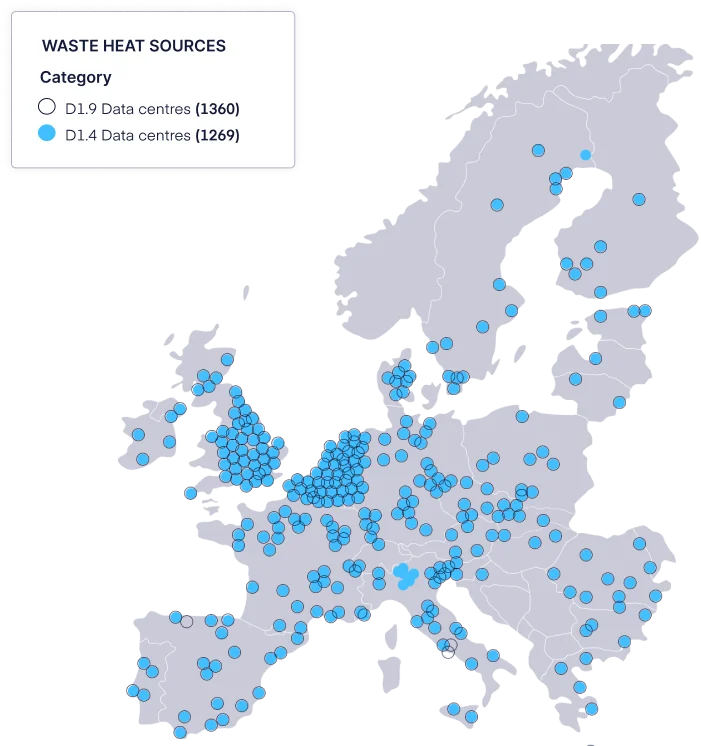
WASTE HEAT RECOVERY POTENTIAL

Worldwide Data centre (DC) are estimated to account for 1 to 2% of electricity usage. Regarding the European context, data centres were responsible for the 56 TWh/year of electricity demand in 2007, 76.8 TWh/year in 2018 and it is expected that they will account for 98.5 TWh/year in 20301,2, that will correspond to 3.2% of the total electricity demand. Nowadays, the number of DCs in the EU is estimated to be around one thousand and it is going to increase sustained by key drivers such as streaming services for movies and television, the emerging Internet Of Things technologies, edge computing, and an overall increase in digital products and services. The electronic devices (as Information and Technology Equipment) hosted in DCs, during their operation, converts the electricity input into heat, that has to be removed to ensure their correct functioning. In this sense, a cooling system is necessary to extract heat generated inside the DC and to reject it outside. Cooling system can account for a large part of electricity consumption in DCs. Also in that case of careful applications of cooling good practices (e.g. energy-efficient DC which implement free cooling strategies, cold/hot zones containment, high operation temperatures), the amount of rejection heat could be very large.


The waste heat potential exists across Europe, where political and regulatory pressure is starting to converge on heat recovery as a key lever to achieve truly sustainable DCs. EC is relying on a mix of existing instruments, reviews of existing legislation and set up of new initiatives. It was with the release of the European Code of Conduct for Data Centres in DCs has become popular and in the last few years further regulations were published: in 2019 Regulation on ecodesign requirements for servers and data storage products EU 2019/424 came and in 2020, the GPP criteria for Data Centres, Server Rooms and Cloud Services was published aiming at helping public authorities to ensure that DC’s equipment and services are procured in such a way that they deliver environmental improvements.

